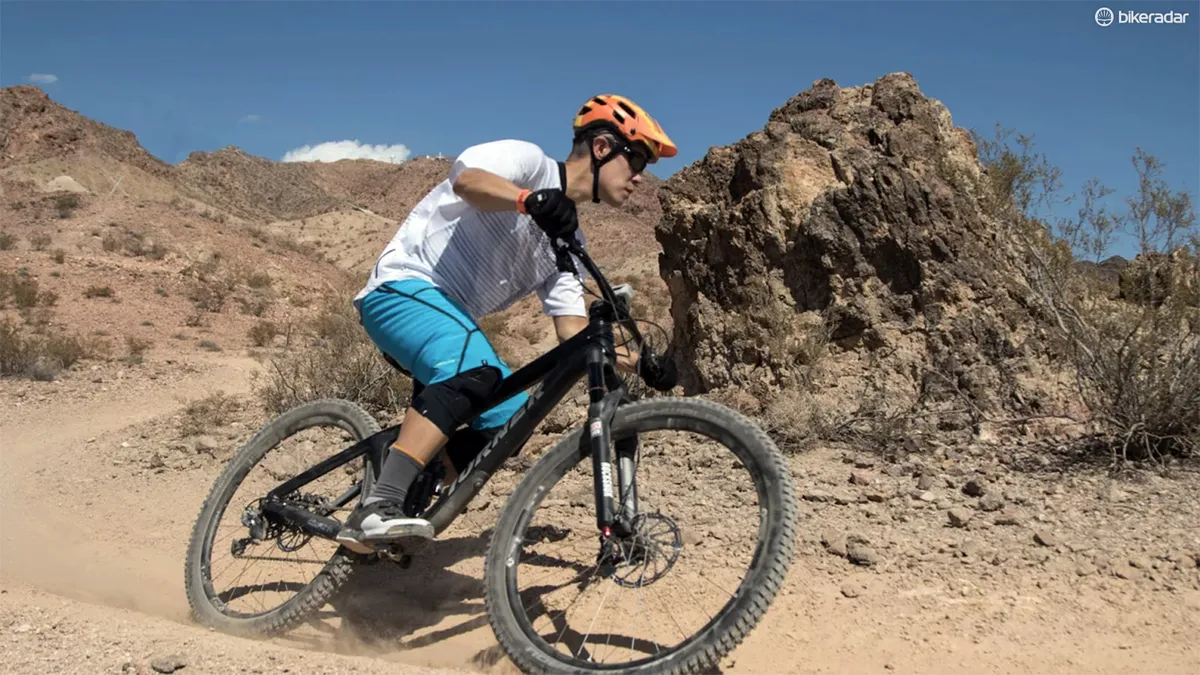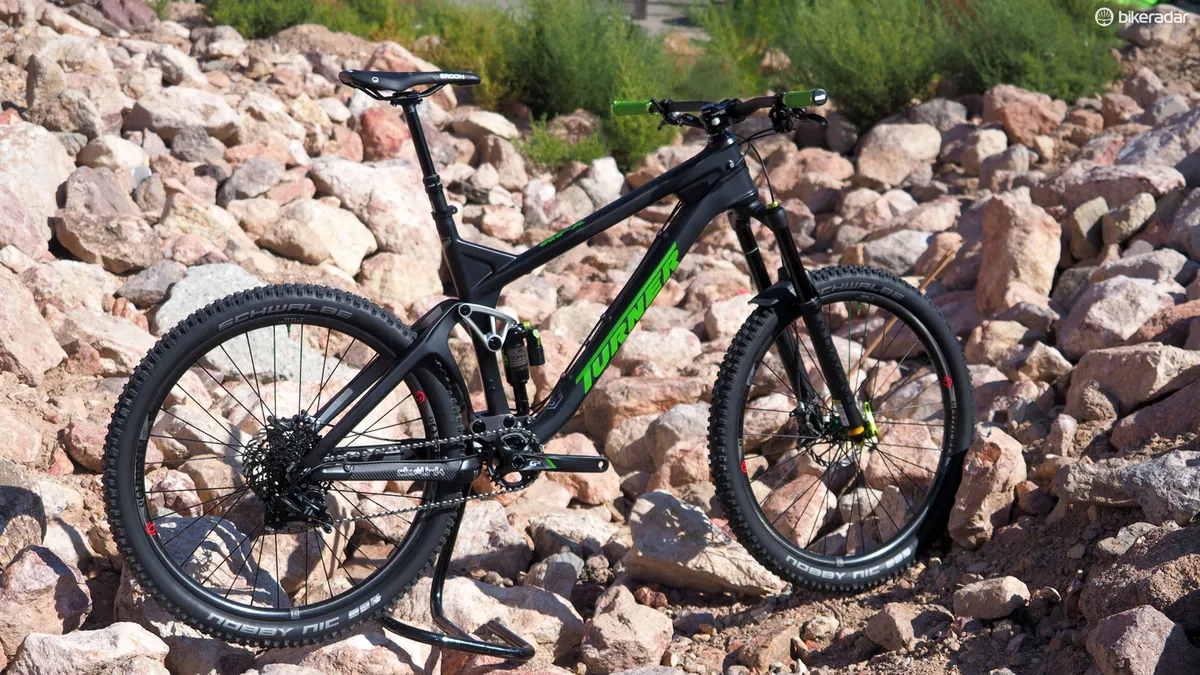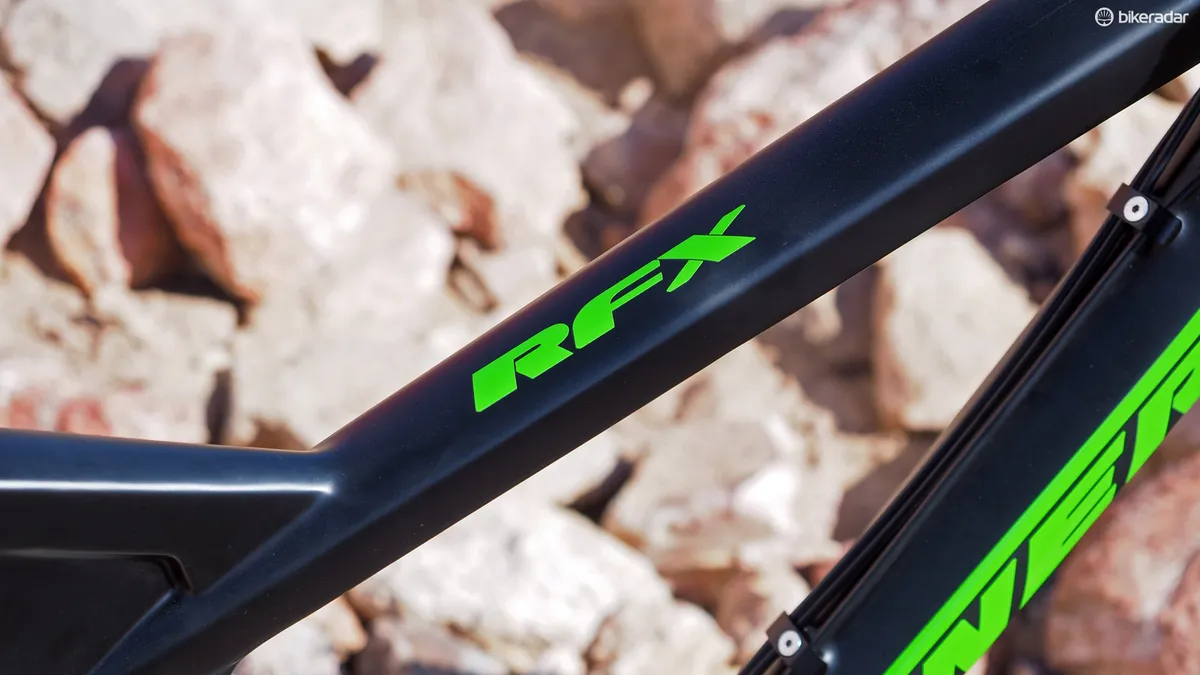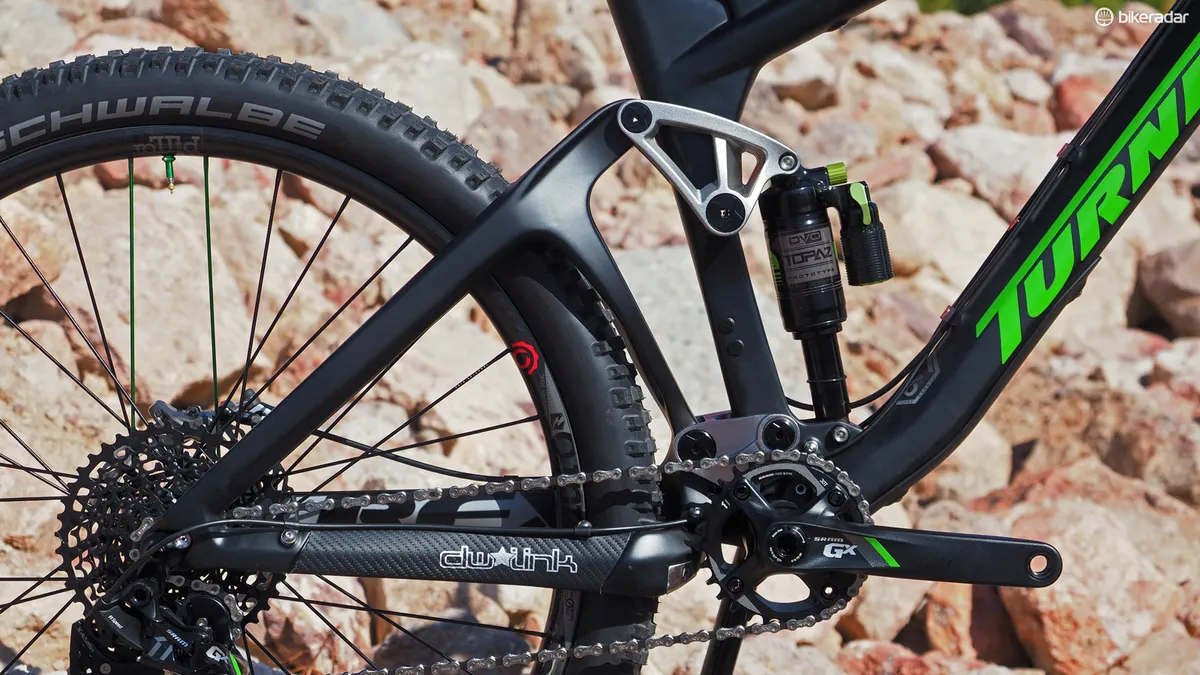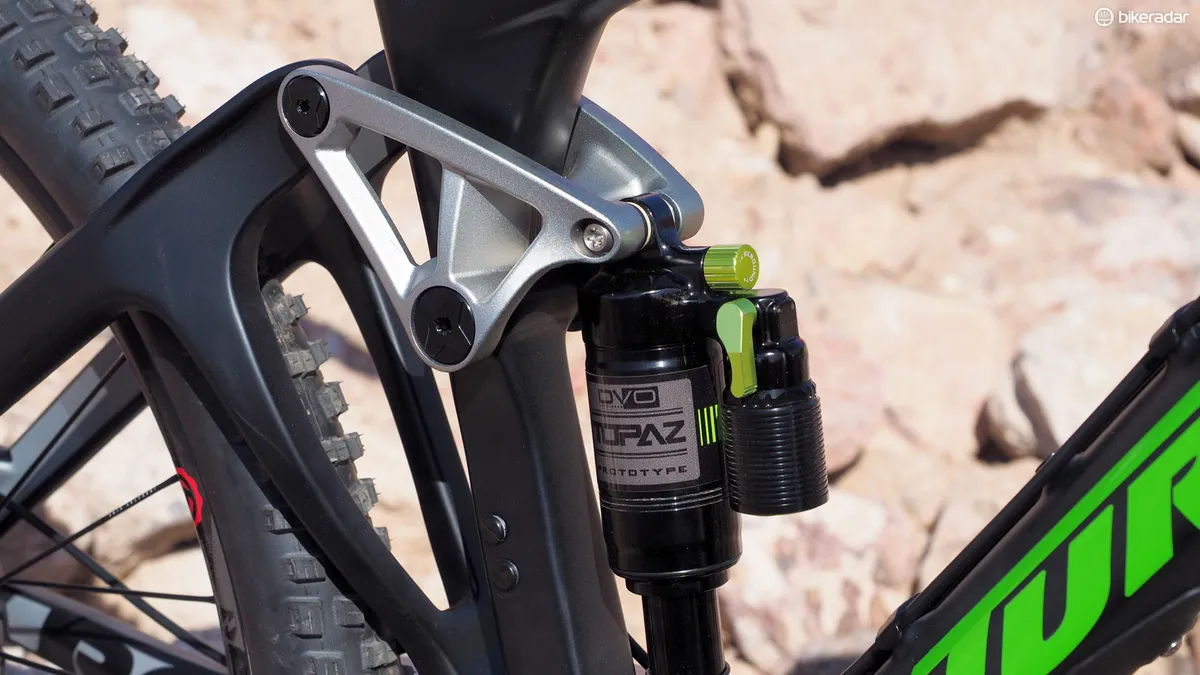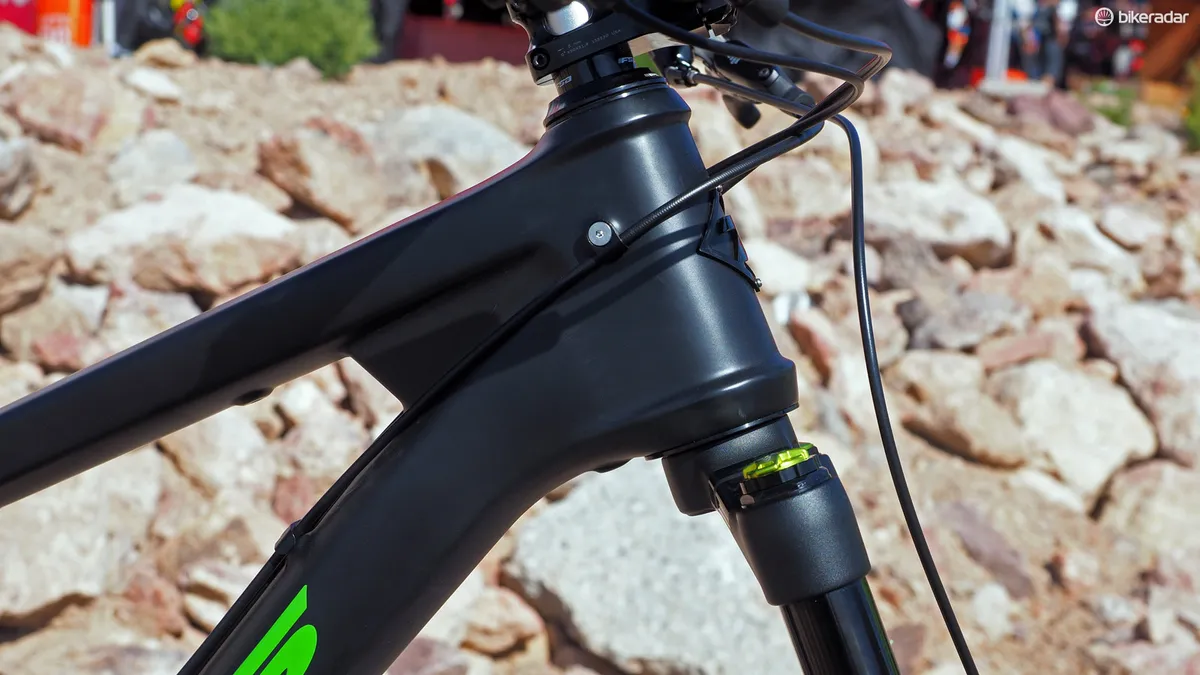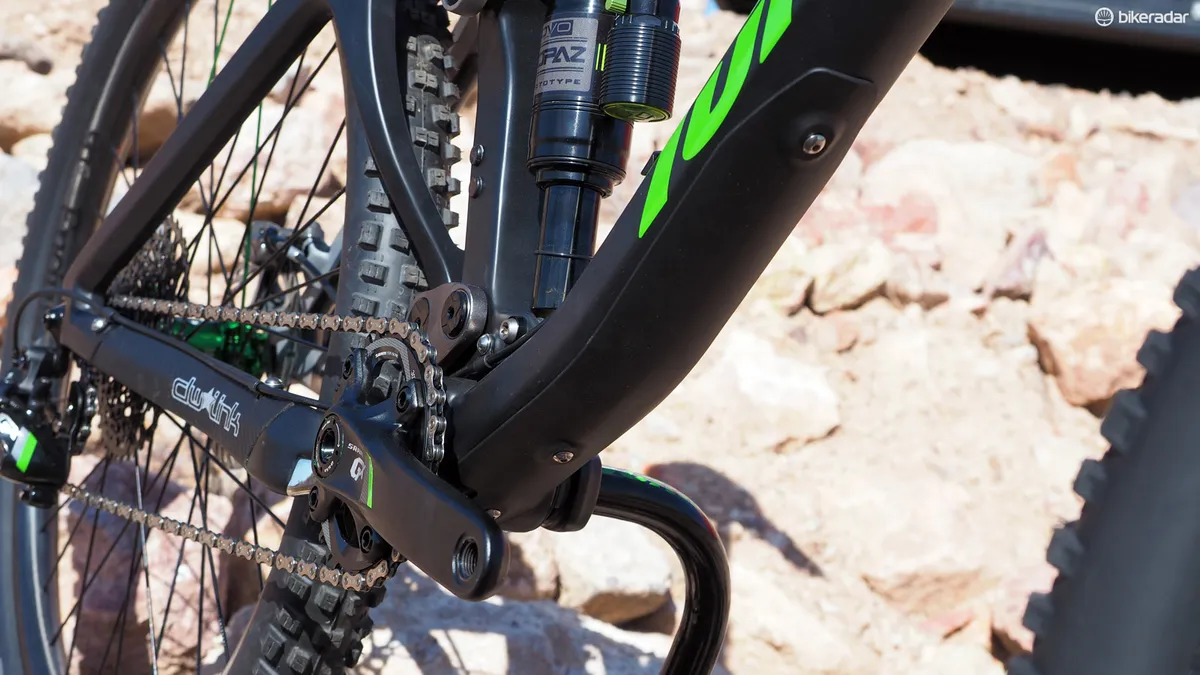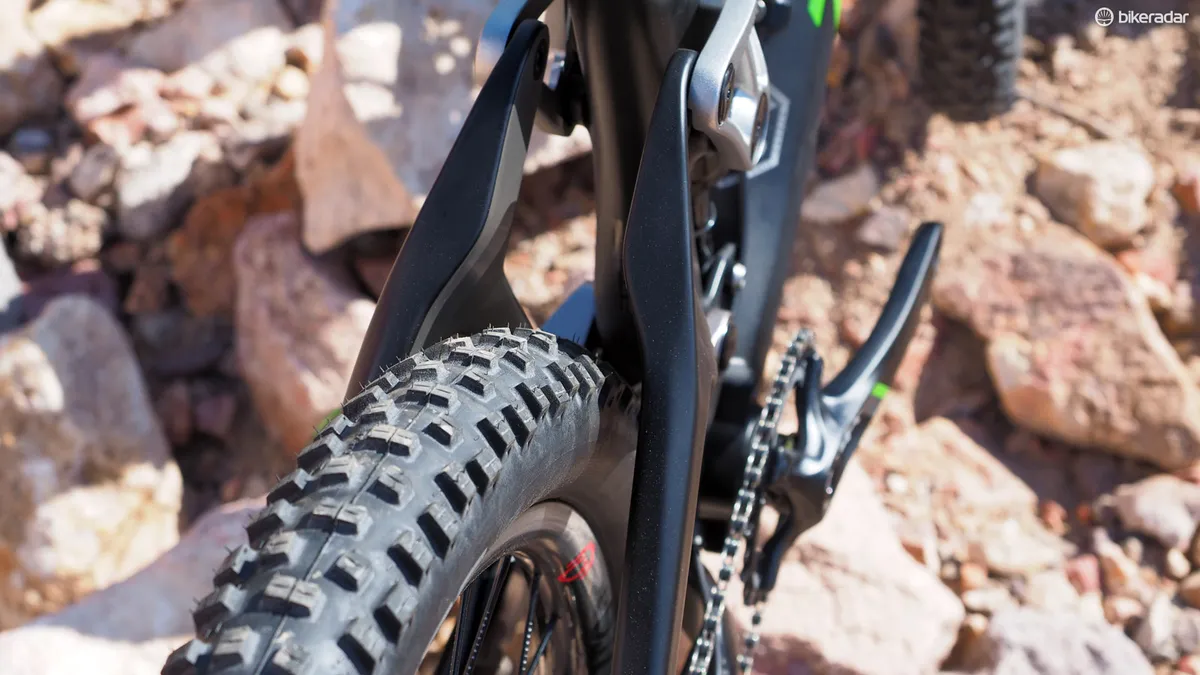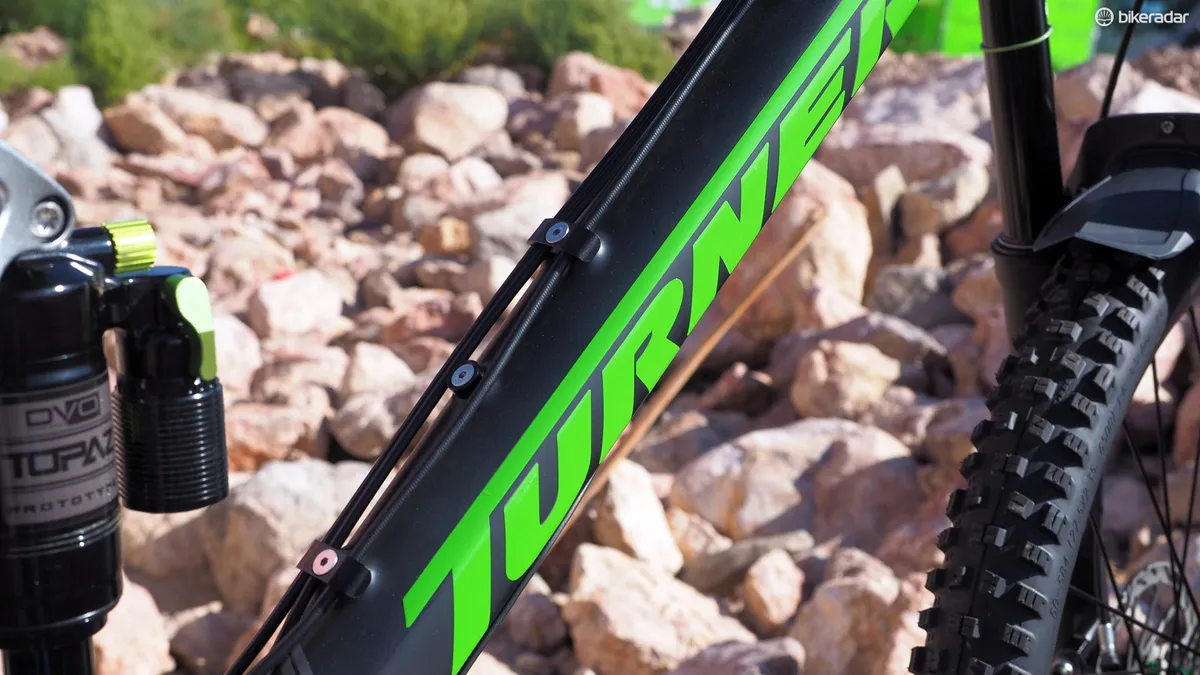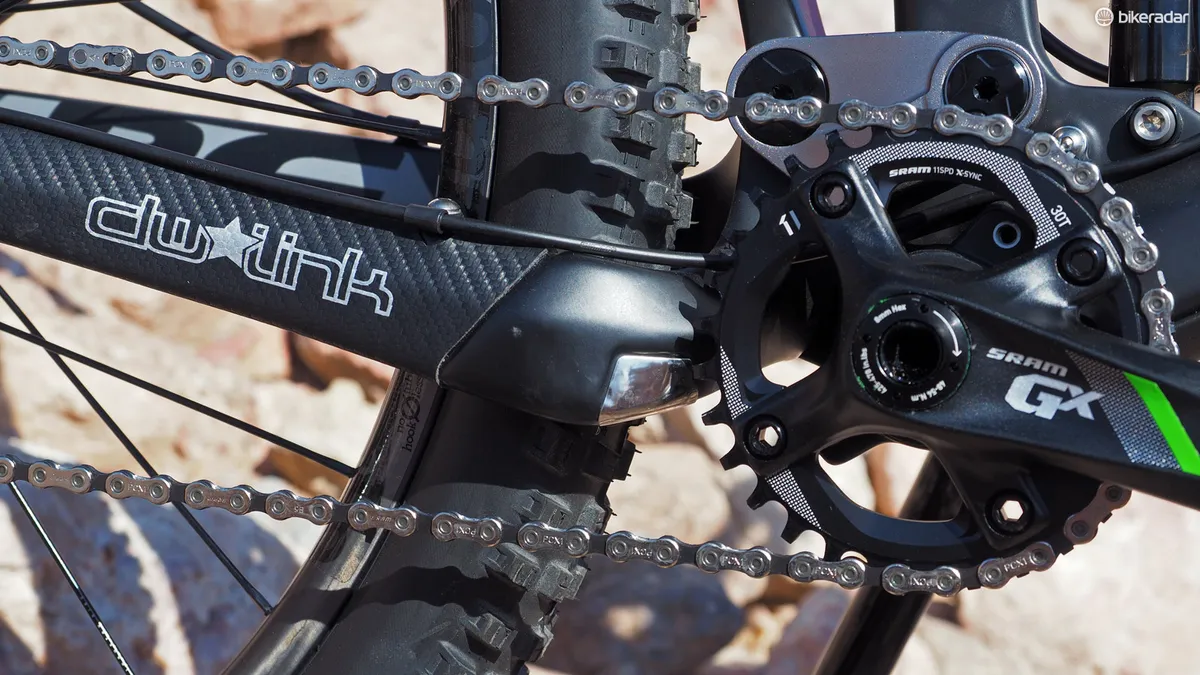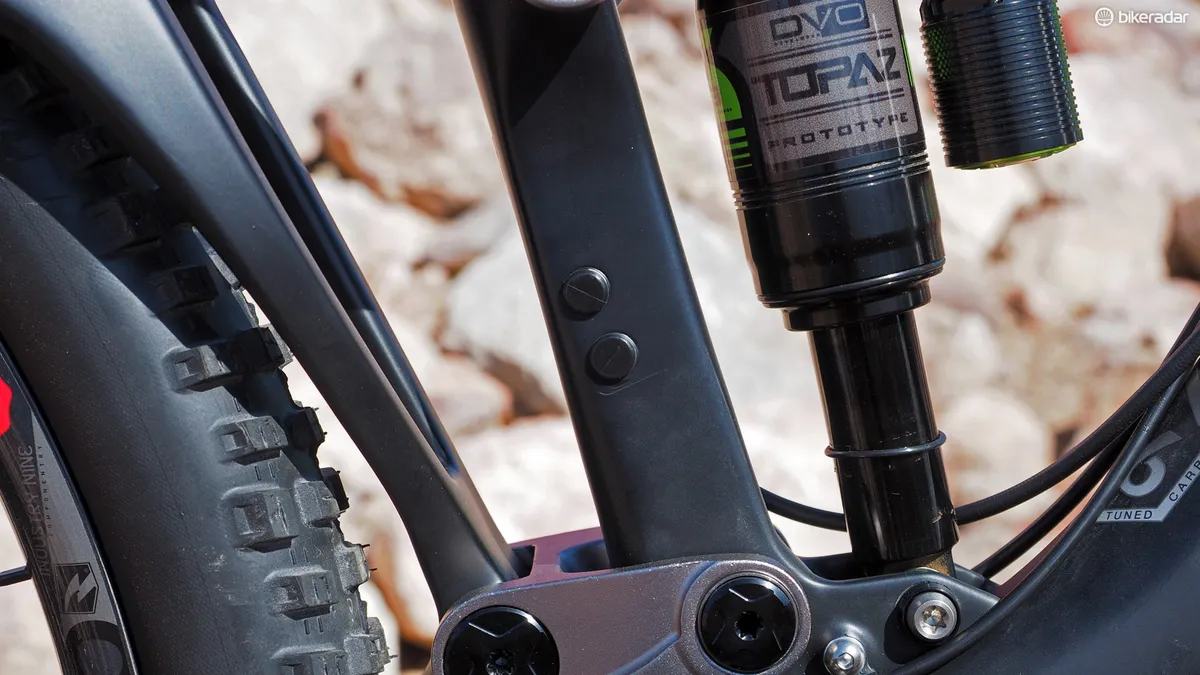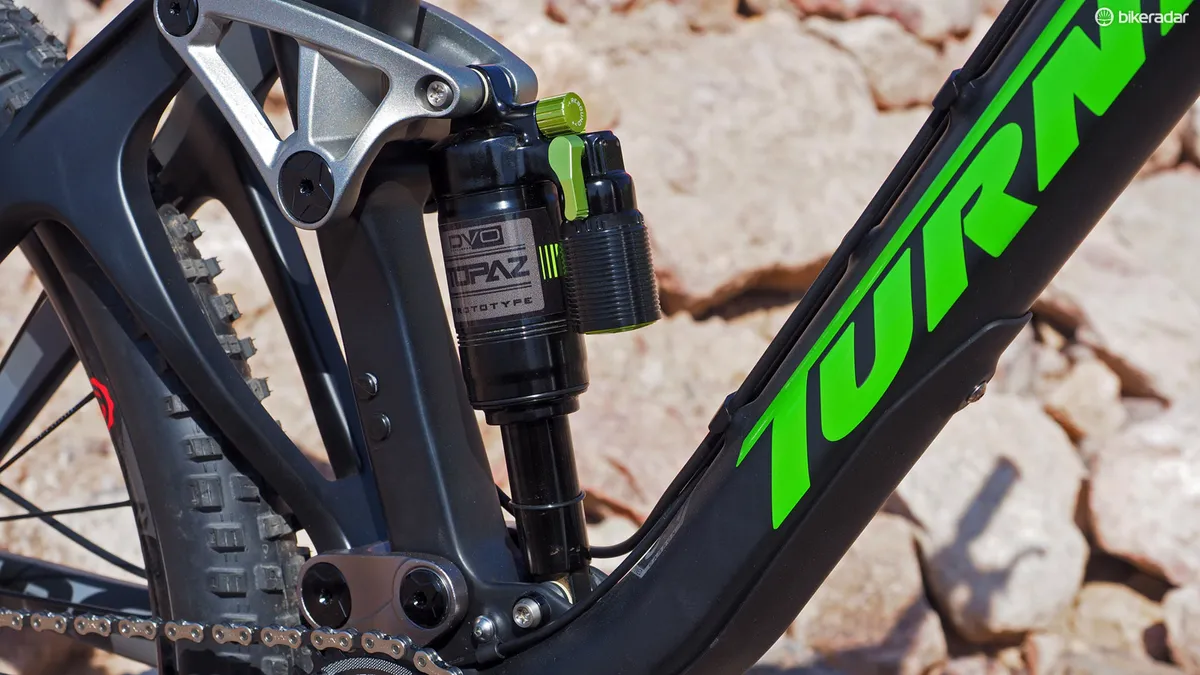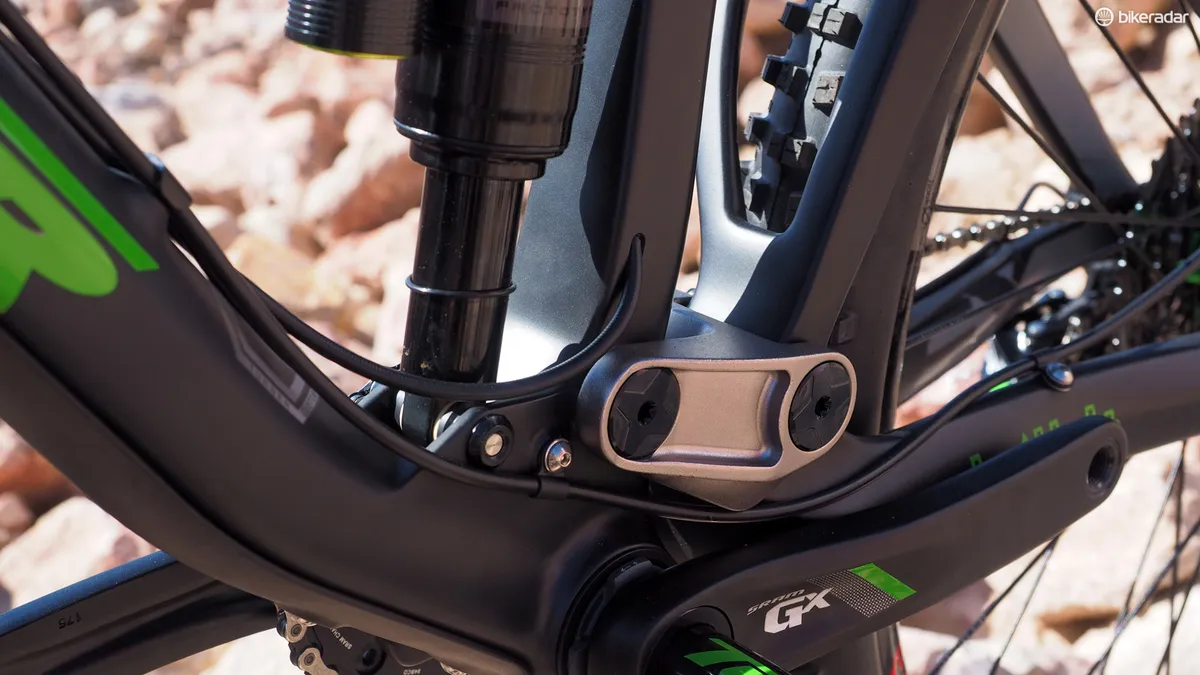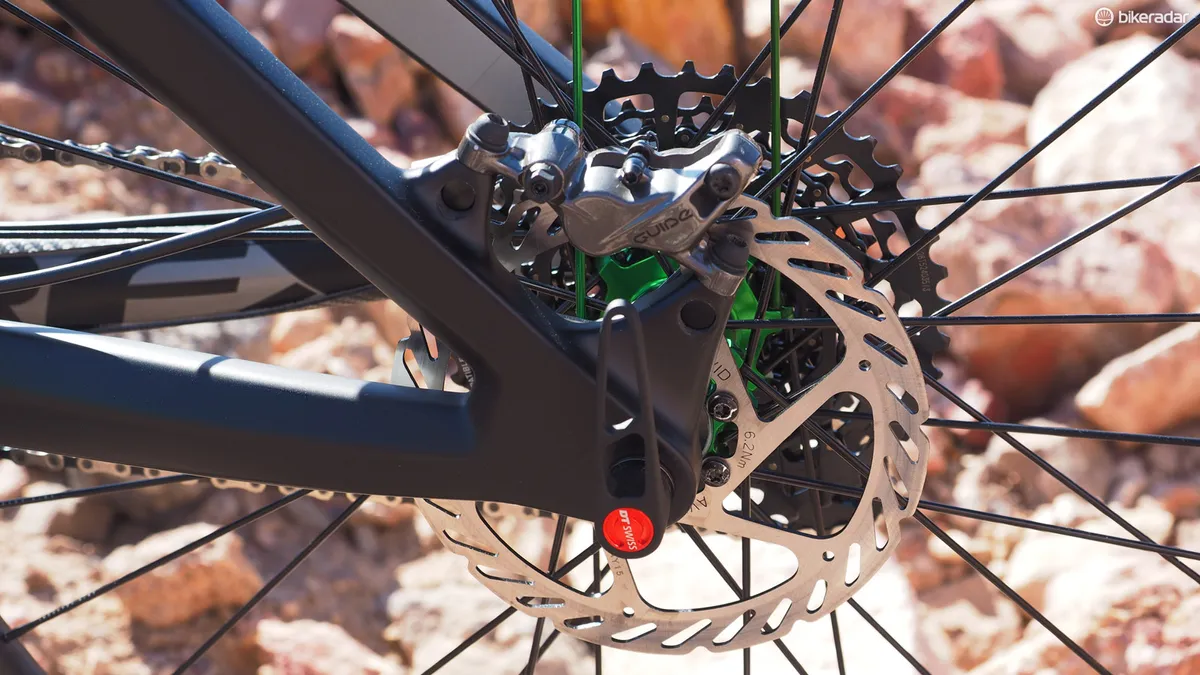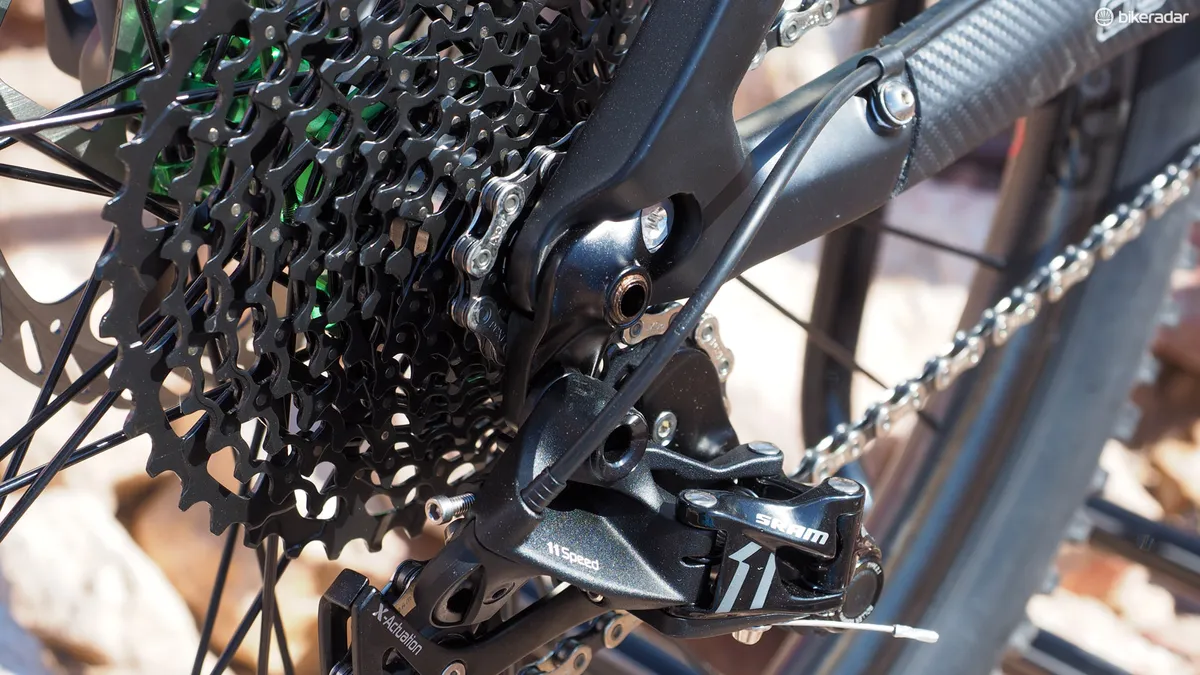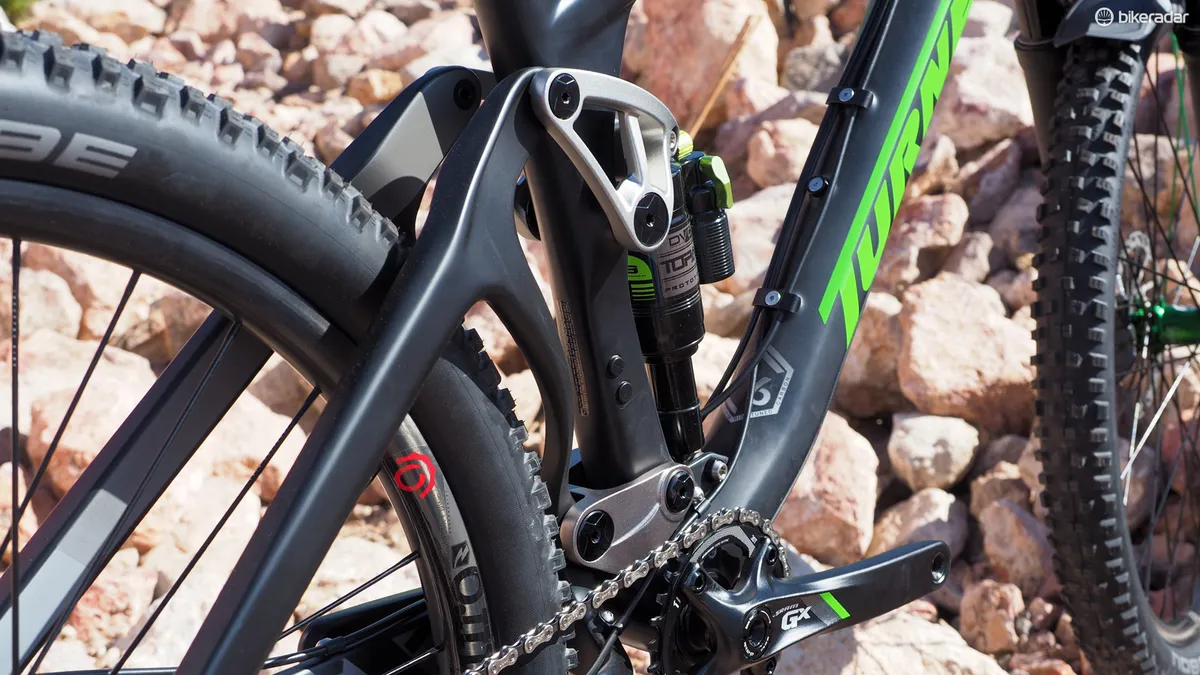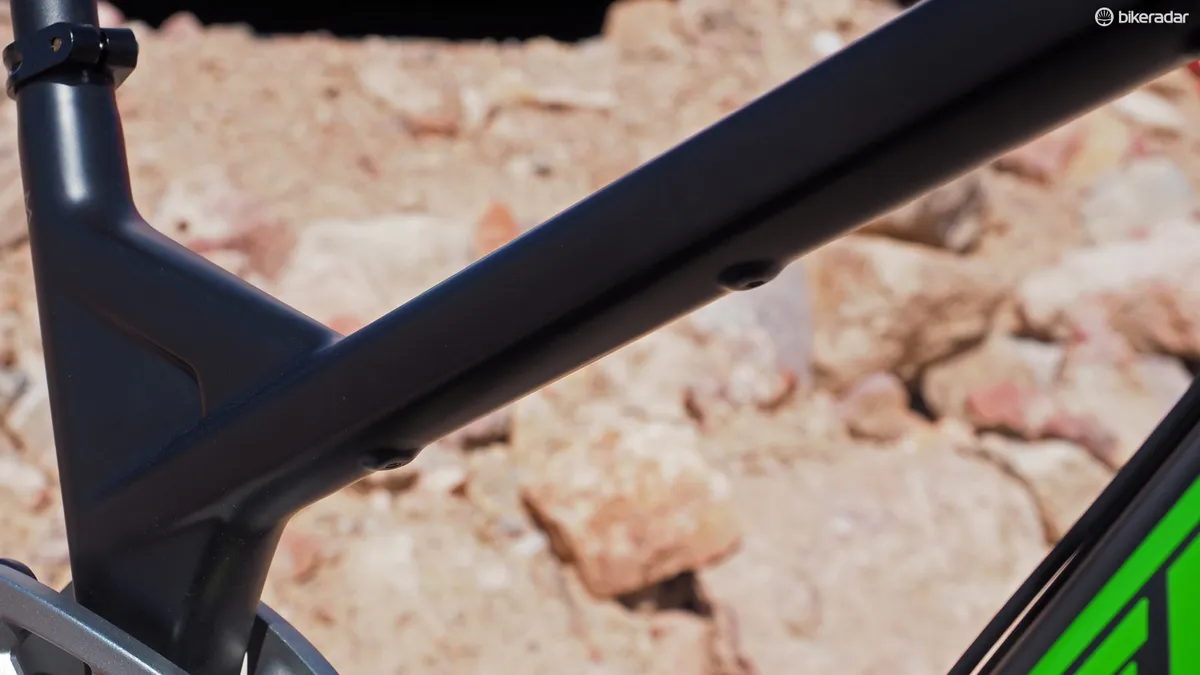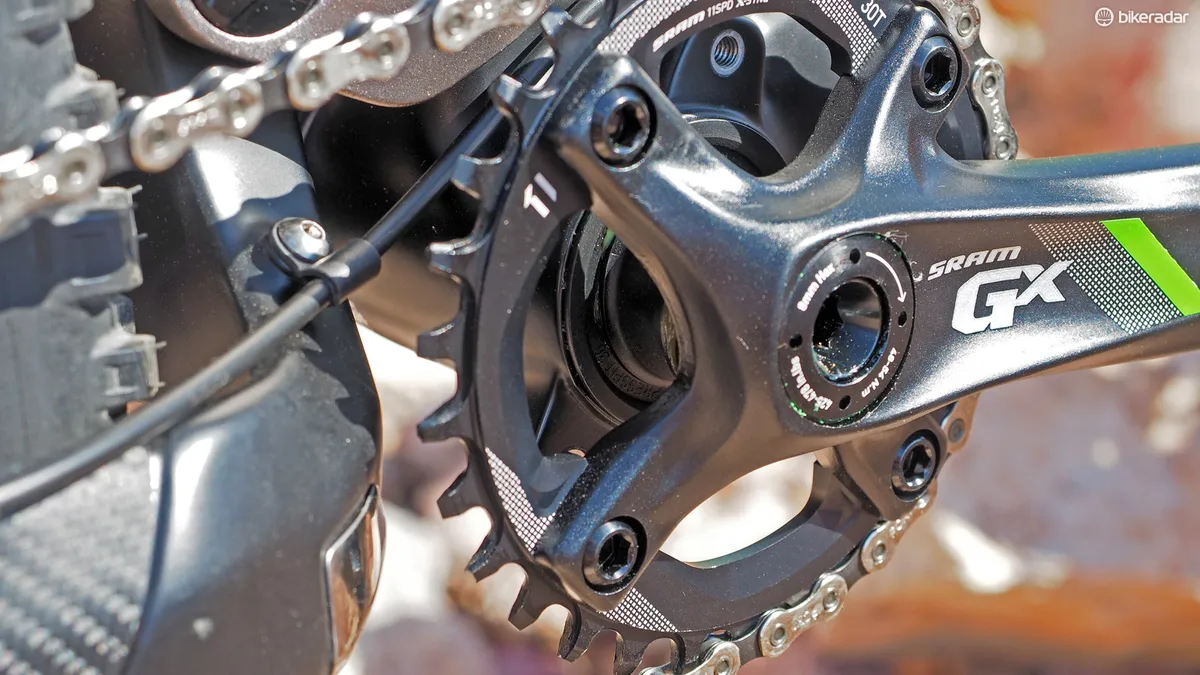Turner Bicycles has resurrected the RFX moniker after a long hiatus, this time applying it to an all-new carbon fiber enduro machine with 27.5in wheels, 160mm of travel and a modern geometry. Some long-held Turner trademarks have fallen by the wayside such as the composite bushing pivots, threaded bottom bracket and US manufacturing, but fans of the brand shouldn’t lament – this bike rips.
- Highs: Stiff and light carbon chassis, outstanding dw-link suspension, good all-around geometry
- Lows: Unproven long-term durability, PF30 bottom bracket
- Buy if: You’re one of the Turner faithful who have been waiting years for the return of the RFX
I tested the new RFX on the first day of Interbike's Outdoor Demo. A 90-minute ride is hardly sufficient to draw long-term conclusions but it doesn’t take long for the RFX’s personality to shine through – especially at Nevada’s notoriously treacherous Bootleg Canyon.
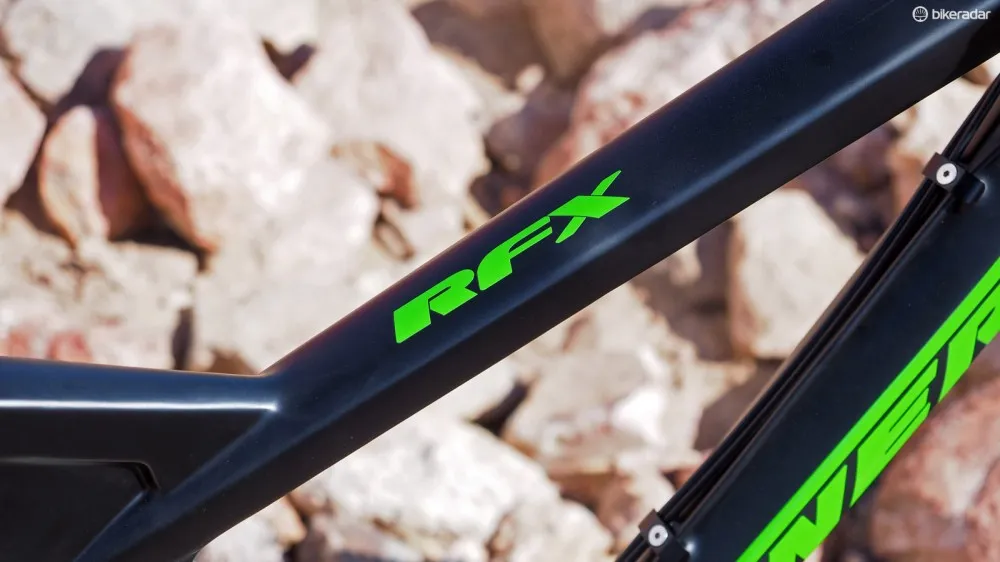
It's been years since we've seen the RFX moniker on a Turner frame but this new version has been worth the wait
Climbing up the long fire road from the base area to the start of the downhill trails, I was first struck by the bike’s remarkably good pedaling efficiency. Turner once again taps the expertise of Dave Weagle for the dw-link rear suspension design and even with the RockShox Monarch Plus Debonair’s three-position compression adjuster on the fully open setting, the rear end barely moves under power, faithfully squirting the bike forward with every stab at the pedals.
Company founder David Turner is careful to note that he purposely didn’t design the RFX as a downhill-centric machine that is only just so-so at climbing. After all, he says, riders still spend “two-thirds to three-quarters of their time” pedaling uphill, and as anyone will attest, descents are more fun when you’ve got more energy left to attack them.
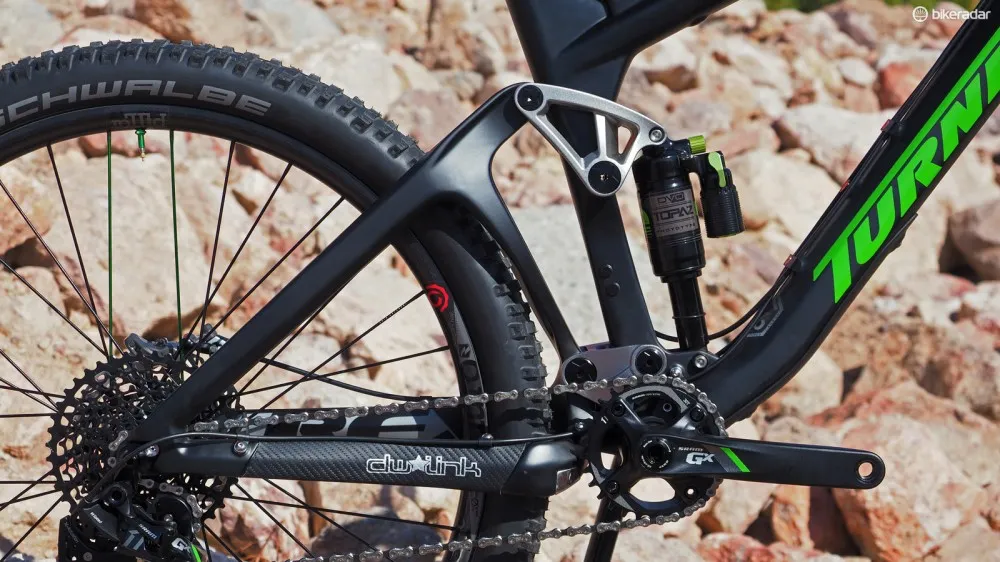
The dw-link rear suspension is outstanding on the bumps and yet climbs with superb efficiency
That said, the RFX is certainly a hoot once you point the front wheel downhill and feels every bit like a highly capable enduro race machine. The rear end gobbles up a wide range of trail obstacles while still maintaining a confidently planted and composed feel that begs you to go harder and bigger, as opposed to one that’s buttery soft and overly squishy. There’s also heaps of midstroke support that resists sinking deeper into the travel than it should, leaving plenty of travel left over for the truly big impacts.
As with other carbon fiber Turner frames, the RFX features cartridge bearings in the suspension pivots instead of the company’s long-standing composite bushings – and even David Turner admits that the change both improves small-bump sensitivity and makes it easier for riders to fine-tune rear shock settings.
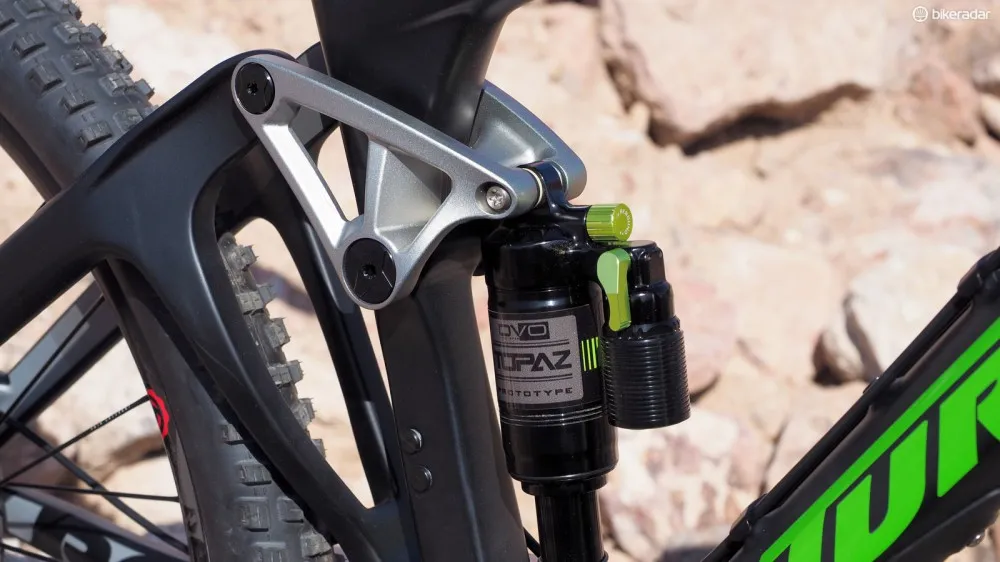
Turner has finally switched away from bushings to cartridge bearings for all of the linkage pivots
The bike’s handling characteristics strike a nice balance between climbing and descending, too. The relatively low 13.4in bottom bracket demands extra care in rock gardens but offers up a stable feel through corners, and the 66-degree head tube angle is neither too steep nor too slack – just right for everyday riding with sufficient stability at high speed but enough agility to easily weave your way through slow switchback corners.
Some might question the slightly compact reach – it’s about 15-20mm shorter across the board than the new Santa Cruz Bronson, for example – and at 438mm, the chainstays aren’t unusually short. However, the reasonable wheelbase length that results is easier to manage in tight confines and the bike still feels small enough to toss around at will.
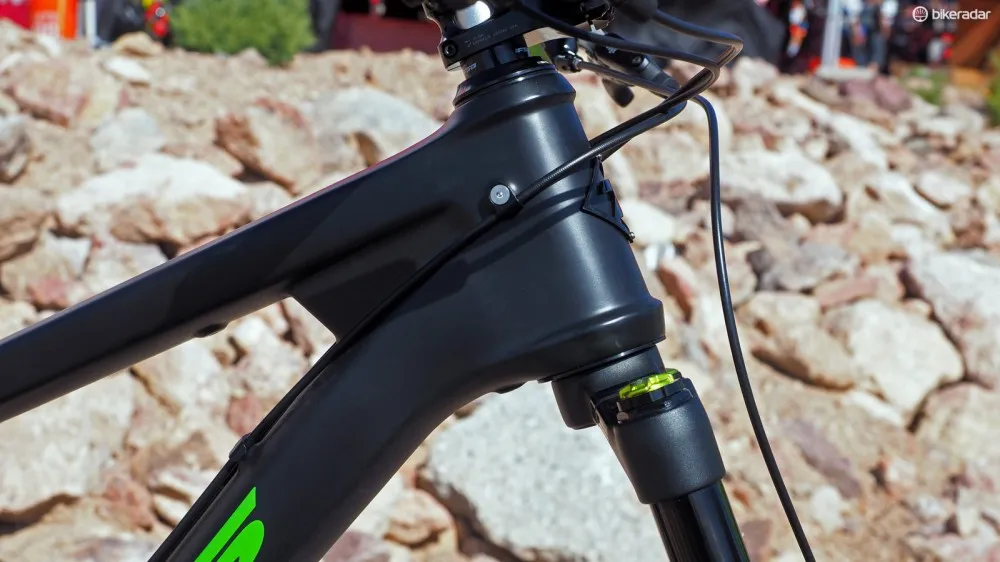
The 66-degree head tube angle feels just right for all-around aggressive trail riding
Also keep in mind that Turner builds the RFX with a massive 49/62mm-diameter tapered head tube that leaves plenty of room for an optional angle-adjustable headset. With up to 1.5 degrees of range, there are few riders who will say that a 64.5-degree head angle is still too steep.
Turner hasn’t just made the head tube ridiculously oversized, either – those proportions are carried throughout the full-carbon front and rear triangles. As a result, handling precision is excellent – particularly when the front is under lots of lateral or twisting loads – and there’s little noticeable flex in any direction. Despite all that surface area, claimed frame is still very reasonable at right around 3kg (6.6lb).
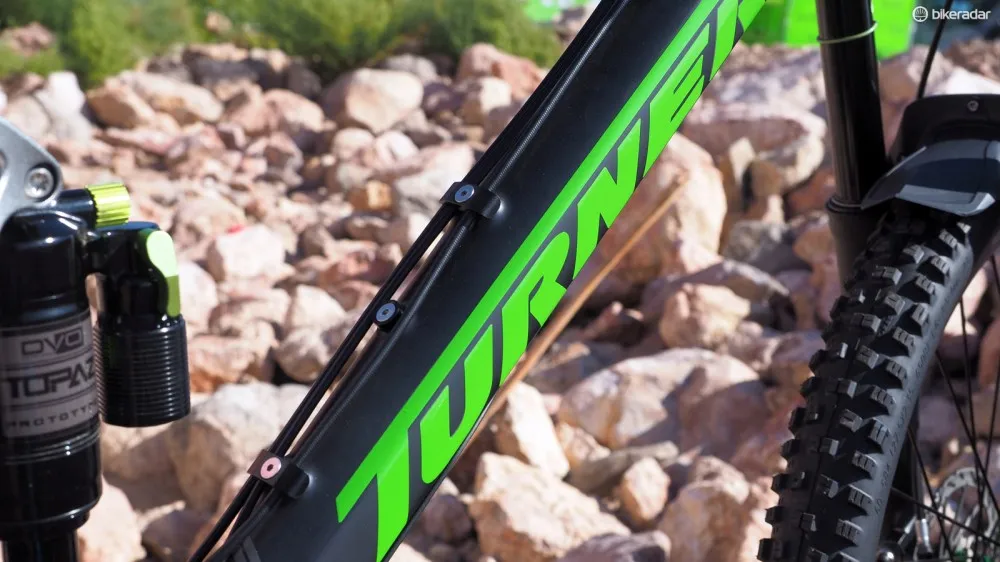
All of the frame tubes are huge for excellent overall chassis rigidity
The US manufacturing and bushing-equipped pivots may have gone away but Turnerati will should still be happy to see the company’s usual fully external cable routing (save for a port on the seat tube for stealth-style droppers), replaceable rear brake caliper mount threads, and typically generous tire clearance (up to 2.4in wide in this case). So far, Turner is still resisting the slightly wider 148mm Boost rear hub spacing, too, so chances are your current wheels will fit just fine.
Additional features include molded down tube and chainstay guards, integrated ISCG05 chain guide tabs, and a removable front derailleur mount – and alas, a PF30 bottom bracket shell, although Turner insists he’s been able to keep frame tolerances acceptably tight for quiet long-term running. And as an upside to the Taiwanese manufacturing, the retail prices are surprisingly reasonable as compared to some of the RFX’s main competitors.
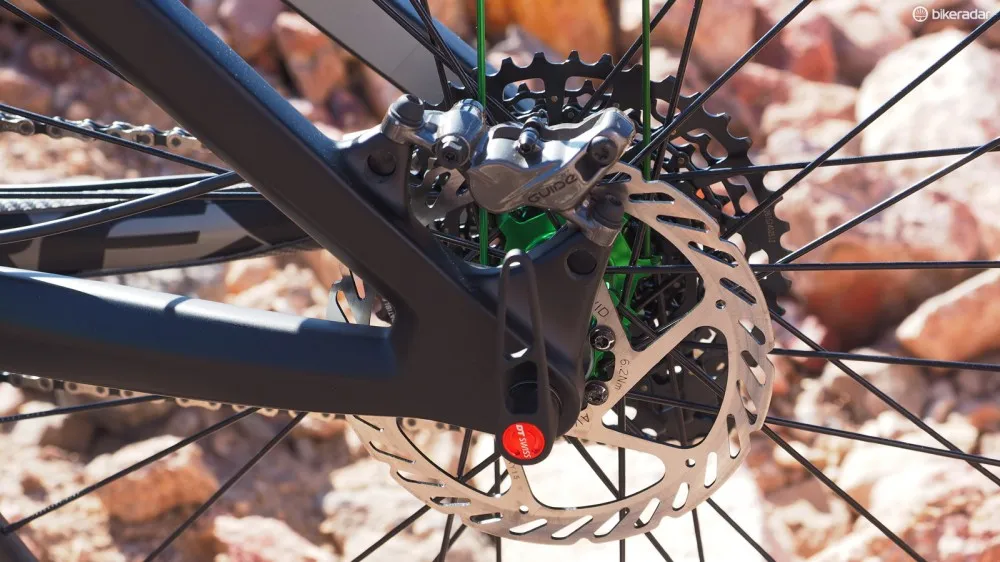
As usual with Turner frames, the threads on the rear brake mounts are replaceable if damaged
Will my first impressions hold up over the long haul? We’ll find out soon enough as BikeRadar has a long-term sample on the way – and while summer may officially be over, there’s still plenty of sunshine left to explore the Colorado high country before the snow starts to fall. Stay tuned for more.
For more information, visit www.turnerbikes.com.

